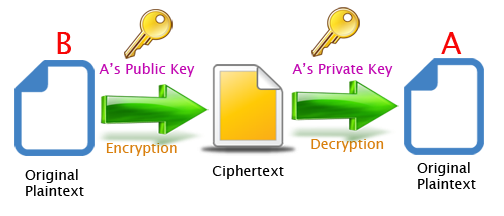Generate A Aes 256 Symmetric Key Python
- Apr 25, 2016 i have been asked to create an 'AES-256 symmetric (also called 'session') key' - not encryption, just the key - to use to sign data within a soap message headers. The requirement is that the key is 256 'in size'. I know that the MCRYPTRIJNDAEL128 size 32 is really the AES-256 cipher in php. I read all of that.
- For this tutorial, we will be using Python 3, so make sure you install pycryptodome, which will give us access to an implementation of AES-256: pip3 install pycryptodomex Padding – Handled by GCM. AES-256 typically requires that the data to be encrypted is supplied in 16-byte blocks, and you may have seen that on other sites or tutorials.
- GPG's AES-256 symmetric encryption is believed to be as secure as it is difficult to. Guess the passphrase; or compromise the machine used to perform encryption and decryption. Guessing the passphrase should be harder if one uses. Gpg -s2k-mode 3 -s2k-count 65011712 -s2k-digest-algo SHA512 -s2k-cipher-algo AES256.
- To use an encryption algorithm such as AES, you can import it from the Crypto.Cipher.AES package. As the PyCrypto block-level encryption API is very low level, it only accepts 16-, 24-, or 32-bytes-long keys for AES-128, AES-196, and AES-256, respectively. Also, for AES encryption using pycrypto.
Dec 02, 2014 Symmetric Encryption in Python. Published December 2, 2014. Estimated Reading Time: 3 minutes. In the middle of a project I’m presently working on, I needed to make use of a Symmetric encryption based on the workflow of my software. A key is required by users to encrypt data and the same key will be needed to decrypt data. We shall use a different Python library for AES, called pycryptodome, which supports the the AES-256-GCM construction: pip install pycryptodome Next, let's play with the below AES-GCM example in Python, which generates a random encryption key (secret key) and uses it to encrypt a text message, then decrypts it back to the original plaintext.
Symmetic encryption
For symmetic encryption, you can use the following:
To encrypt:
To decrypt:

Asymmetric encryption
For Asymmetric encryption you must first generate your private key and extract the public key.
To encrypt:
To decrypt:
Encripting files
You can't directly encrypt a large file using rsautl. Instead, do the following:
- Generate a key using
openssl rand, e.g.openssl rand 32 -out keyfile. - Encrypt the key file using
openssl rsautl. - Encrypt the data using
openssl enc, using the generated key from step 1. - Package the encrypted key file with the encrypted data. The recipient will need to decrypt the key with their private key, then decrypt the data with the resulting key.
Ultimate solution for safe and high secured encode anyone file in OpenSSL and command-line:
Private key generation (encrypted private key):
With unecrypted private key:
With encrypted private key:
With existing encrypted (unecrypted) private key:
Encrypt a file
Encrypt binary file:
Encrypt text file:
What is what:
smime— ssl command for S/MIME utility (smime(1)).-encrypt— chosen method for file process.-binary— use safe file process. Normally the input message is converted to 'canonical' format as required by the S/MIME specification, this switch disable it. It is necessary for all binary files (like a images, sounds, ZIP archives).-aes-256-cbc— chosen cipher AES in 256 bit for encryption (strong). If not specified 40 bit RC2 is used (very weak). (Supported ciphers).-in plainfile.zip— input file name.-out encrypted.zip.enc— output file name.-outform DER— encode output file as binary. If is not specified, file is encoded by base64 and file size will be increased by 30%.yourSslCertificate.pem— file name of your certificate's. That should be in PEM format.
That command can very effectively a strongly encrypt any file regardless of its size or format.
Decrypt a file
Decrypt binary file:
For text files:
Aes 256 Software
What is what:
-inform DER— same as-outformabove.-inkey private.key— file name of your private key. That should be in PEM format and can be encrypted by password.-passin pass:your_password— (optional) your password for private key encrypt.
Verification
Creating a signed digest of a file:
Aes 256 Java
Verify a signed digest: